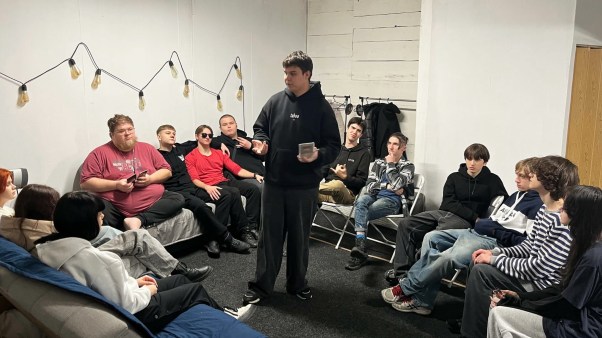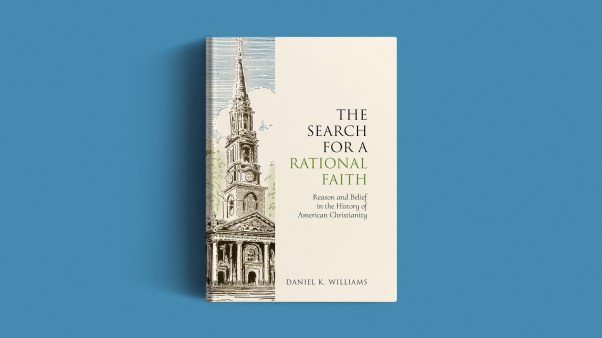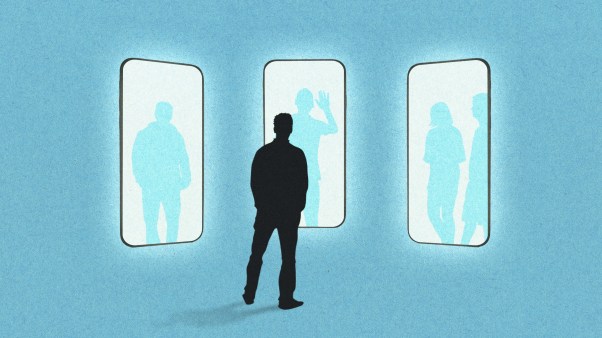Far before our time, the Renaissance humanist Giovanni Pico della Mirandola was an early advocate of transhumanism. In his Oration on the Dignity of Man from 1486, he has the Creator speak the following words to Adam, the first human:
We have made thee neither of heaven nor of earth, neither mortal nor immortal, so that with freedom of choice and with honor, as though the maker and molder of thyself, thou mayest fashion thyself in whatever shape thou shalt prefer. Thou shalt have the power to degenerate into the lower forms of life, which are brutish. Thou shalt have the power, out of thy soul’s judgment, to be reborn into the higher forms, which are divine.
Pico della Mirandola is the unofficial saint of transhumanists because he was pushing human plasticity over the edge. He believed that the higher forms of humans are, in fact, more than humans: They are divine.
Here in the 21st century, philosopher Nick Bostrom defines a posthuman as a being for whom at least one general central capacity, such as health span, cognition, or emotion, is “greatly exceed[ing] the maximum attainable by any current human being without recourse to new technological means.”
The neurotechnology company Neuralink has pioneered brain-computer interfaces for people with paralysis to help them communicate and control devices remotely. Neil Harbisson, born colorblind, received a skull implant in 2004 in the form of an antenna that allows him to “see” colors as audio vibrations. A filmmaker named Rob Spence replaced his right eye with a wireless video camera and calls himself an “eyeborg.” Biotech CEO Elizabeth Parrish underwent experimental gene therapy in 2015 and has claimed to have successfully slowed the aging process.
Still other potential developments are purely cosmetic. “If you could reshape your foot and turn it into a platform heel, would you?” asks one article about body modifications in the fashion world. “Or how about a statement piece consisting of soft, turquoise horns on either shoulder?”
One has only to read the great pessimist philosopher Arthur Schopenhauer—who wrote that “life swings like a pendulum backward and forward between pain and boredom”—to be tempted to join the transhumanist project. But whether the goal of transcending humanity is worthy of being pursued depends on whether we believe that being merely human is something that ought to be overcome.
I, for one, believe that just as there is beauty and goodness to being an eagle or a dolphin, there is beauty and goodness to being human and no more. The central article of the Christian faith, after all, is that the divine Word became human flesh. By dwelling among us, the Word sanctified humanity in its finitude and fragility. At the same time, upgrades—by which I mean our development and use of tools, even those that are integrated into our bodies—are not excluded.
A few years back, I taught a course at Yale University on faith and globalization with UK prime minister Tony Blair and a secularist colleague. At one point during the class, my colleague held up a pill and showed it to the students. When religious people are sick, he said, they pray, believing that God will perform a miracle. But secular people rely on the marvels of modern medicine, such as this tiny pill that almost instantly takes care of high blood pressure. He concluded that modern medicine, obviously, works better than God.
When he was finished, I turned to him and said, “You and I agree on one important thing: We both deny the same god!” He looked at me, puzzled.
“The god you deny is incompatible with human inventiveness and work—with all worldly processes,” I said. “I deny that god as well. In contrast, the God in whom I believe makes possible the entirety of the worldly reality in all its dynamic complexity, including human inventiveness and work.”
The first pages of the Bible tell of God working with such worldly realities. In the Garden of Eden, God didn’t drop food from heaven into the mouths of Adam and Eve and, applying pressure to their jaws, make them chew. Instead, they worked for food, tilling and keeping the garden; and in and under their work, God was at work too.
When it comes to the ethical dilemmas we encounter in transhumanism, we should exercise an abundance of caution. Yet it is a mistake to think that divine work and human work, including technological advances, mutually exclude one another.
Humans came to believe in God when they had no scientific knowledge about the basic structure of reality, when the best antiseptic was lavender, and when the dominant means of transportation was their own calloused bare feet.
Although our understanding of the world—and therefore of God’s relation to the world—has changed, we moderns can still believe in that same God now that we are exploring the astrophysical and quantum properties of black holes, editing the genome to prevent diseases and enhance human capacities, and traveling in driverless cars—and we can believe without abandoning reason.
The more power we have, the more important it is to choose wisely the basic direction of our lives. The more intelligent and powerful tools we create, the clearer we must be about the human purposes these tools will serve. And the only way to discern what purposes are worthy of our humanity is to know what we ought to trust and love above all things and what kind of humans we hope to be.
To be human—created in the imago Dei—is to live a vision of the good life. This vision sketches a portrait of the kind of humans we ought to be and provides the orienting criteria for what we ought to desire and how we ought to live. We all live by some such vision, whether we consciously embrace it or whether it remains inchoate and hidden from our sight, woven into the fabric of our beliefs and practices.
Since visions of the good life are by definition normative in character, science cannot formulate them. Knowledge about what was, what is, and what is likely to be, no matter how precise and detailed, can never prescribe what ought to be.
Imagine that we decided to give up privacy and permit all available data about us to be collected—all our conversations and correspondence, our health and habits and purchases. A highly intelligent algorithm could come up with an exceptionally accurate account of our behavior and therefore would likely be able to predict what we would do in many situations. It could tell us what we desire and what we find desirable, even what we believe about who we ought to be and what we ought to do. It might even come to know us better than we know ourselves, a scenario with which Yuval Noah Harari ends his book Homo Deus: A Brief History of Tomorrow.
But the one thing such a highly intelligent algorithm would not be able to tell us is who we ought to be—what we ought to do and toward what we ought to stretch ourselves, who we actually should be and what we should desire. Science and technological advancements cannot give us a vision of the true and good life. Reason cannot bring to light what should be most important to us—it cannot answer the question about how we as individuals and as the human community ought to live. For that, we believers turn to Jesus Christ.
Jesus is the measure of our humanity. We seek to move up, to ascend, to achieve with technology’s help a state of knowledge, power, and bliss comparable to God’s—to become gods. But we have a one-sided and therefore false image of God. In Jesus, the true God took on our limitations and came to serve the lowest, not considering
equality with God as something to be grasped, but emptied himself, taking the form of a slave, assuming human likeness. And being found in appearance as a human, he humbled himself and became obedient to the point of death—even death on a cross” (Phil. 2:6–8, NRSVue).
The coming of Christ radically changed how we should think not just of God but also of ourselves. If “the very essence of God is to love and serve,” as Max Scheler wrote, then what is most God-like is self-decentering love: in humility to regard others as more important than ourselves and to look to the interests of others, not primarily to our own (vv. 3–4).
This is not to say that technological developments are unimportant or that we should only fear them. But the crucial question for us is whether they help or hinder us in aligning our lives with the story of Jesus Christ. What we should fear most is a future devoid of faith in Christ and Christlike goodness.
Toward the end of the 21st century, surrounded by spectacular technology, it may come to pass, as Aldous Huxley imagined in Brave New World, that most of us will be so conditioned that we will not be able to “help behaving as [we] ought to behave.” And should anything nonetheless go wrong, some miracle drug would give us a “holiday from the facts.”
For Huxley, this was a dystopian vision. But the persistence with which we seek to eliminate suffering and multiply personalized pleasures suggests that this is the kind of future we want. With the help of science and technology, we may well find ourselves in such a world.
But like the swine in Jesus’ teaching who trampled over the pearls (Matt. 7:6), we will then have turned away from what matters most and squandered what’s best in our humanity. The crucial question for the future is thus the same one Jesus posed to his disciples two millennia ago: “When the Son of Man comes, will he find faith on the earth?” (Luke 18:8).
Miroslav Volf is the Henry B. Wright Professor of Theology at Yale University, founding director of the Yale Center for Faith and Culture, and author of The Cost of Ambition: How Striving to Be Better Than Others Makes Us Worse (Brazos Press, 2025).



















